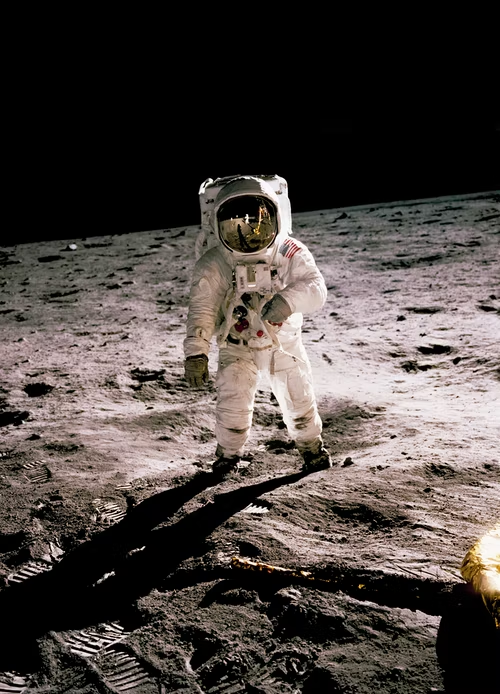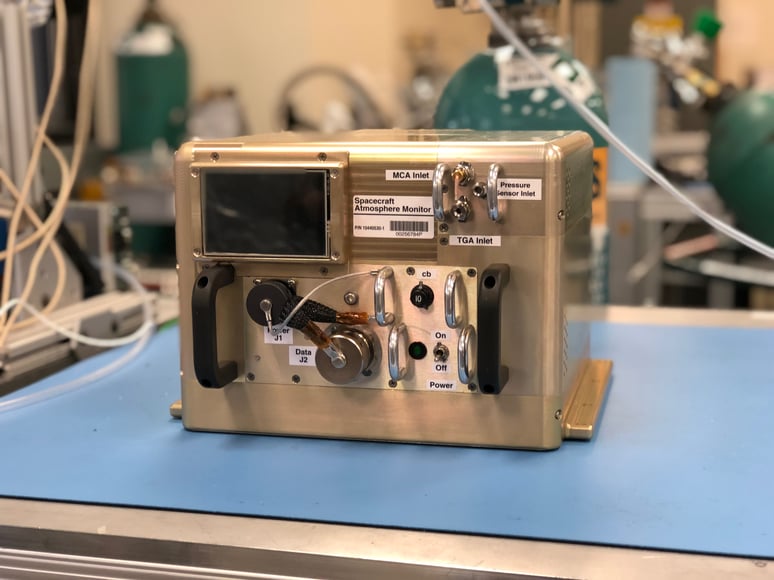SilcoTek® and NASA have had a long history together, and our journey continues with the Spacecraft Atmosphere Monitor (S.A.M.) system. This system is designed to monitor the atmosphere within the spacecraft to ensure the astronauts are not breathing harmful chemical compounds. This blog post walks you through the system’s past, present, and future.
SilcoTek Coatings Assist in Monitoring International Space Station Atmosphere

Background
Numerous space agencies around the world have relied on SilcoTek’s game changing coatings to assist in their travels beyond Earth. A great review of these missions can be found in a blog post here. They include SilcoNert® 2000 coatings for inertness on Mars rovers, Cassini space craft that flew through and sampled Saturn’s rings, and the Rosetta mission that sampled the materials found on a comet, Dursan® and Silcolloy® have been used to reduce oxidation and corrosion issues to components of Hall thrusters, and now SilcoGuard® has been put to work in NASA’s Spacecraft Atmosphere Monitor (S.A.M.). This blog post will discuss S.A.M. and its recent testing of the International Space Station’s (ISS) atmosphere.
 Figure 1: An example of the S.A.M. Photo courtesy of https://en.wikipedia.org/
Figure 1: An example of the S.A.M. Photo courtesy of https://en.wikipedia.org/
Data and Discussion
Space is limitless, but space in a spacecraft is highly limited. This limited volume has led to many advancements in size reduction of MEMS (micro electromechanical system) based components. A non-comprehensive list of examples for MEMS devices can be found here. Food is also a concern for manned missions. All packaging must be designed to minimize volume and waste. Equipment to make food must also be miniature and multipurpose. A brief discussion on this can be found here. Even the astronauts on board manned missions need to be conscious of their belongings. They are permitted to carry a “Personal Preference Kit” which is limited to 5” by 8” by 2” (about the size of a lunch box). Examples of items that have been taken include family photos, flags, t-shirts, books, and personal mementos.
With a return to the moon and potentially a manned mission to Mars on the horizon, NASA has found it necessary to fully understand the atmosphere quality to keep the astronauts safe. Off gassing from various materials may cause a buildup of harmful volatile organic compounds such as benzene and benzene-like molecules, siloxanes, and various molecules that are exhaled by astronauts. A list of species that plan to be monitored can be found in this early publication about the S.A.M. system. The publication also features a photo of the quadrupole ion trap (QIT) which is coated with SilcoGuard. The authors describe the function of this coating to be the prevention of trace organic molecules sticking to the surface of the trap. This has a dual purpose. First, it imparts accuracy to trace level analysis of these organic compounds. If the compound is present in low levels, but sticks to the metal surface, the S.A.M. will erroneously underestimate the concentration of that compound. Additionally, those molecules that get stuck will either build up to the point where the trap is too dirty to operate, or they will later release from the surface causing erroneously high or random measurements at a later time.
The Jet Propulsion Laboratory, the group that created S.A.M., recently published the results from a test where they continuously monitored the atmosphere on the International Space Station between August 2019 and July 2021. This publication can be found in the International Journal of Mass Spectrometry. The results showed that S.A.M., which measures 9.5” x 8.75” x 7.5” and weighs 10 kg, was able to accurately measure the following:
- Nitrogen, oxygen, argon, carbon dioxide, and methane once every 2 seconds to ensure they are all at the proper levels.
- Eliminate the background signals of the normal atmosphere, identify species of interest, and report the amount of those chemical species autonomously once every second.
- The data stored on the S.A.M. was analyzed after it returned to Earth to extract isotopic ratios of the major elemental components of the ISS’s atmosphere.
- There was a concern that trace levels of benzene might be in the ISS’s atmosphere; however, the S.A.M. was able to reliably show that it was not present.
Conclusion
With manned missions to the moon and potentially Mars on the horizon, measuring the air quality of spacecraft cabin atmospheres has become of more interest. One of the major challenges for the JPL group was how to squeeze a complex and sophisticated instrument into the smallest and lightest possible geometry. Recent reports claim that not only have they succeeded in making an adequate cabin monitor in their S.A.M. system, but they claim that it has “precision and accuracy comparable to the state-of-the-art laboratory size magnetic sector mass spectrometers”. This is wildly impressive and SilcoTek’s amorphous silicon coating is present to accurately and reliably keep the system running.
Have questions or comments about this post? Contact us to discover how our coatings can improve your processes, too!




